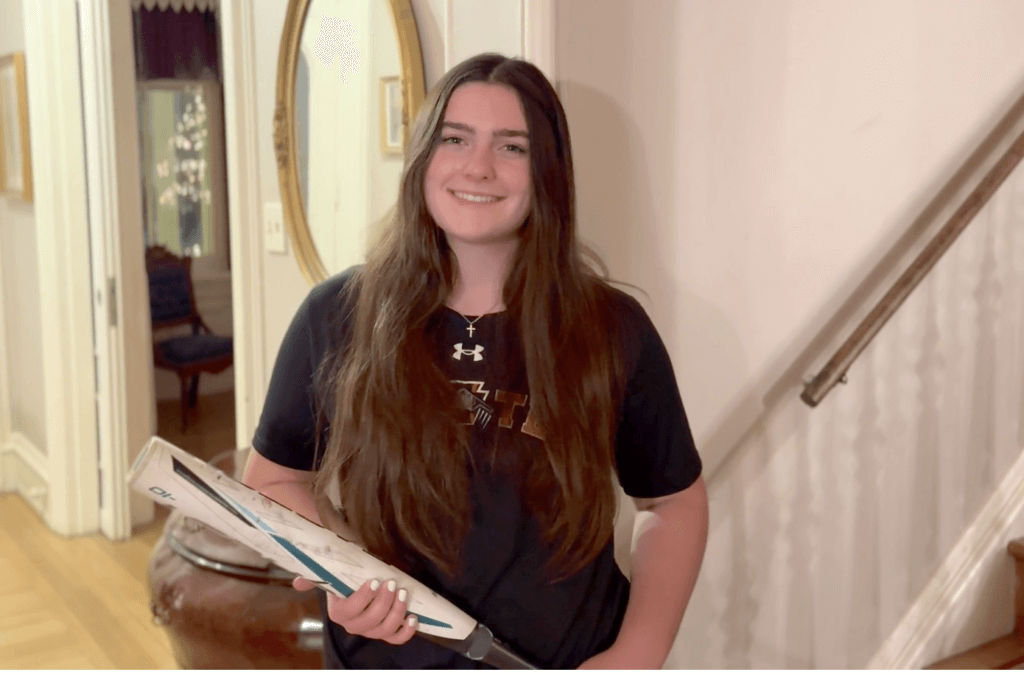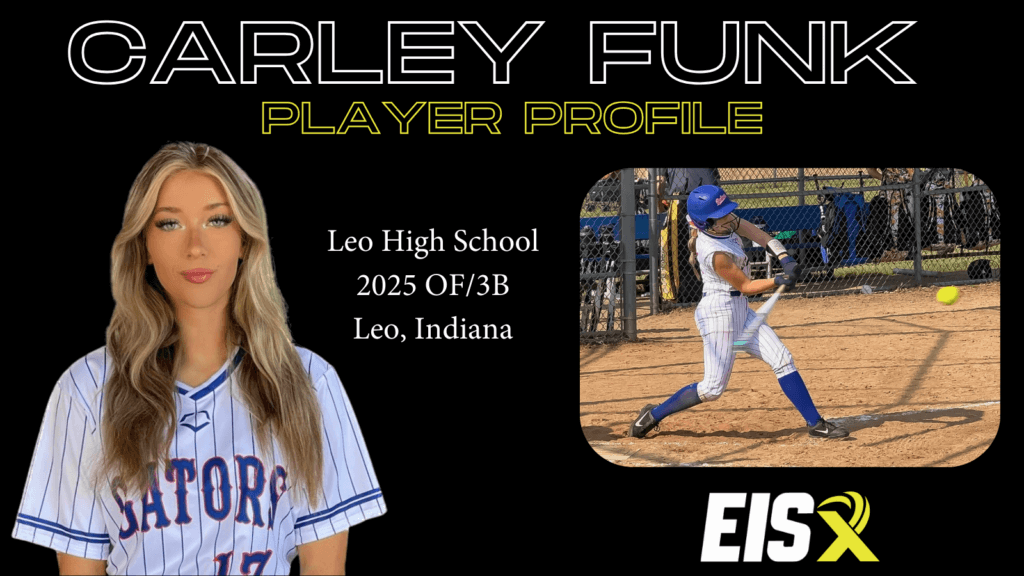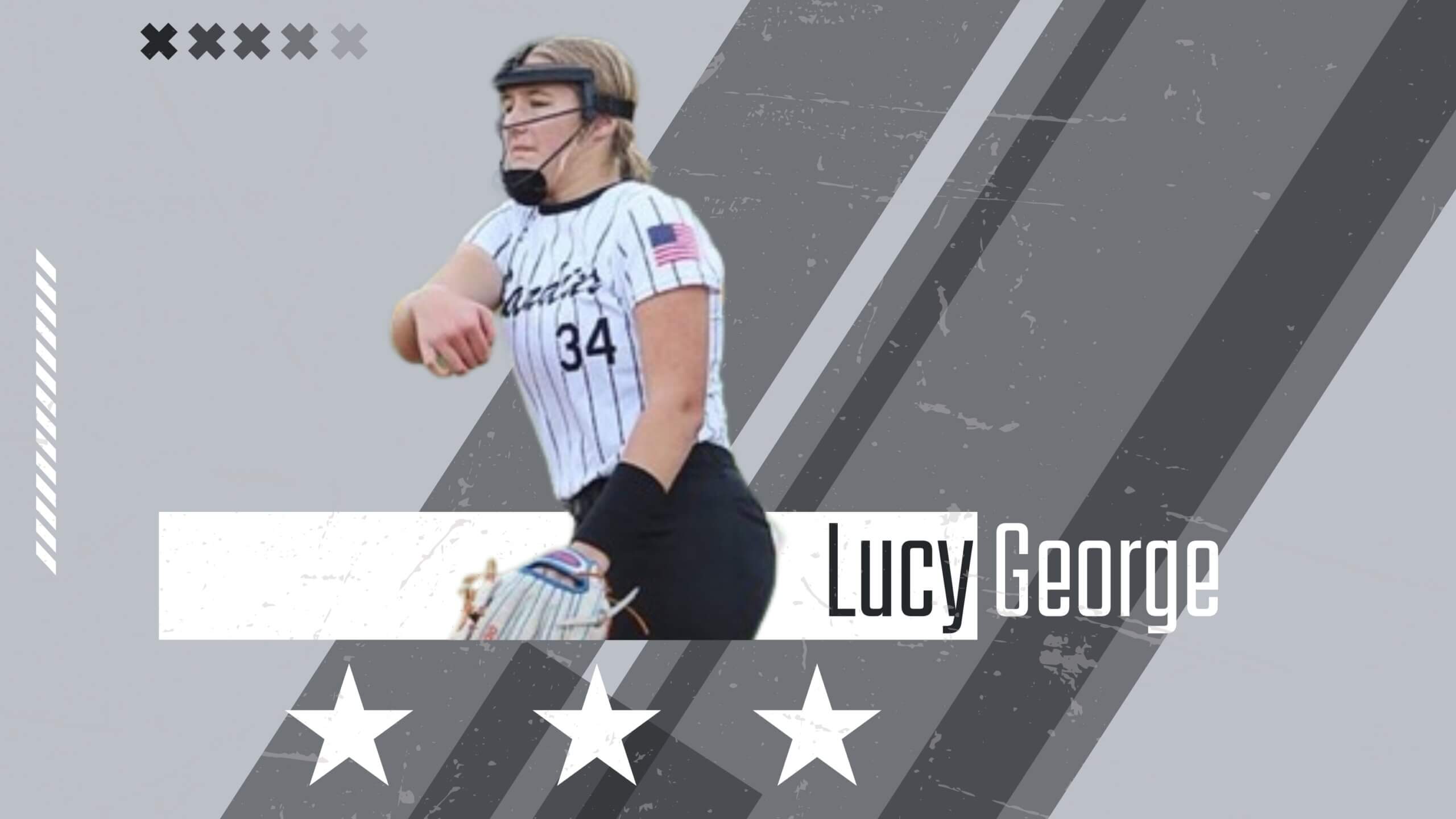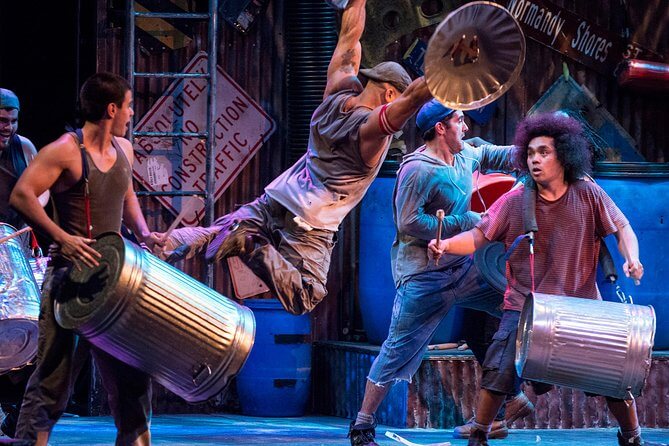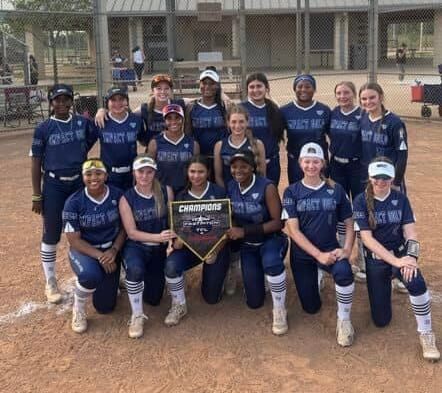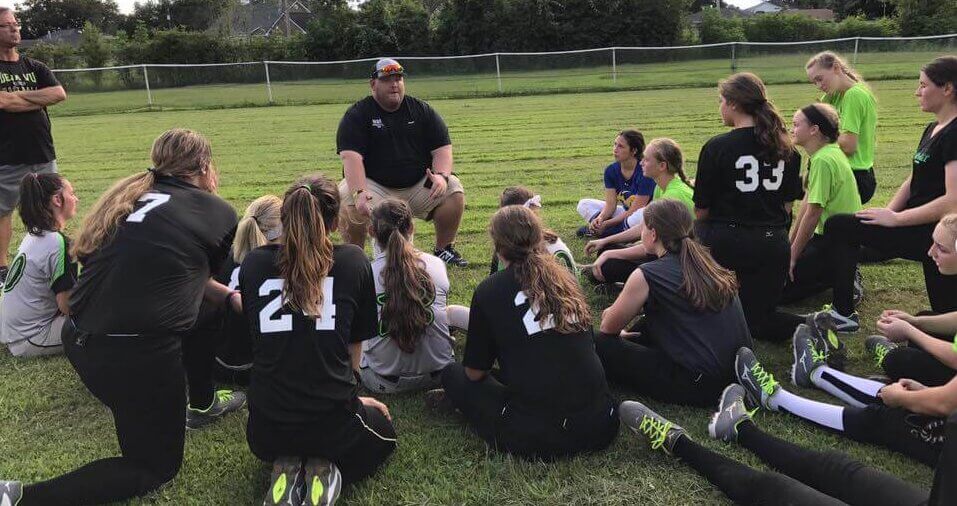
Hospitalized since before Christmas, Robby Wilson—the National Director of Softball Scouting for National Scouting Report—died this morning from complications from COVID-19.
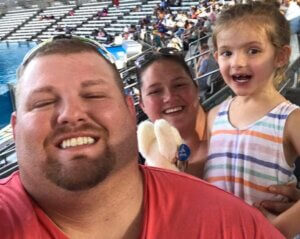
His wife, Leslie Wilson, posted on Robby’s Facebook page the following:
It is with a heavy heart I have to write this post this morning. Early this morning around 3:30 am, Robby lost his battle with COVID. He fought a great battle but ultimately God had bigger plans for him. We wanted him to come back to us but it does give us some peace knowing that he is in Heaven.
Please pray for Parker and I as well as his mom, dad, and sister as we go through the upcoming days and weeks without our husband, dad, son and brother while we figure out our new normal without him.
I just want to thank everyone for their prayers and support thus far. I told Robby last night how many people had reached out with their love, prayers, and well wishes. I feel at peace knowing that he knew that.
I am in shock, stunned that a vibrant and passionate young man who I’ve known for many years will no longer be part of not just the softball world but my personal life.

Mike Smith, who is the Executive Director of Scouting for NSR wrote me this morning stating: “We lost a great friend and scout, one that impacted so many lives to make dreams come true.”
Rusty Rigney, the CEO of National Scouting Report added: “We all mourn the loss of a great friend today. We have lost one of the best scouts to ever wear an NSR shirt. Robby has touched and changed so many lives. He has made the dreams of so many girls wanting to play college softball come true. He will be remembered by our scouts as a leader, an innovator and most importantly a friend.”
Robby was very dialed into what was happening behind the scenes and would share his insights and knowledge on and off the record. He wrote for me frequently (below is his last articles) and I trusted his judgment on players and what was happening in the softball world.
My heart aches for his wonderful wife and beautiful daughter Parker who Robby loved dearly. May she forever know how impactful Robby was and how much he loved his family.
Finally, a GoFundMe Account has been set up for Robby’s family to help offset costs including his funeral… Click HERE to go to it.
— Brentt Eads, Extra Inning Softball
It is with a heavy heart I have to write this post this morning. Early this morning around 3:30am, Robby lost his battle with COVID. He fought a great battle but ultimately God had bigger plans for him. We wanted him to come back to us but we have peace knowing he is in Heaven
— Coach Robby Wilson NSR (@RobbyWilsonNSR) January 12, 2021
Here is the article from a week and a half ago announcing his entering the hospital plus Robby’s most recent article for us and one from a year ago…
*****
Medical News: Thoughts & Prayers Go to National Scouting Report Director of Softball Robby Wilson… Hospitalized in ICU with COVID-19
Originally posted Jan. 2, 2021 on Extra Inning Softball

If you’ve been around club softball very long, you’ve likely crossed paths with Robby Wilson, the National Director for Softball Scouting for National Scouting Report.
Robby, who is large in size and personality, has been a frequent contributor to Extra Inning Softball—we ran one of his Inside Pitch (blog) articles (“The Current State of College Softball Recruiting”) as recently as six weeks ago and, below, reprint an article he did for us last January on Using Video in Softball Recruiting.
We found out a few days ago that Robby has been in the ICU of Big Baptist Hospital in Little Rock, Arkansas since before Christmas. He, his wife Leslie and daughter Parker had COVID symptoms the week of Dec. 21, but Robby had to be hospitalized when his “breathing, fever and dehydration” became worse, according to his wife.
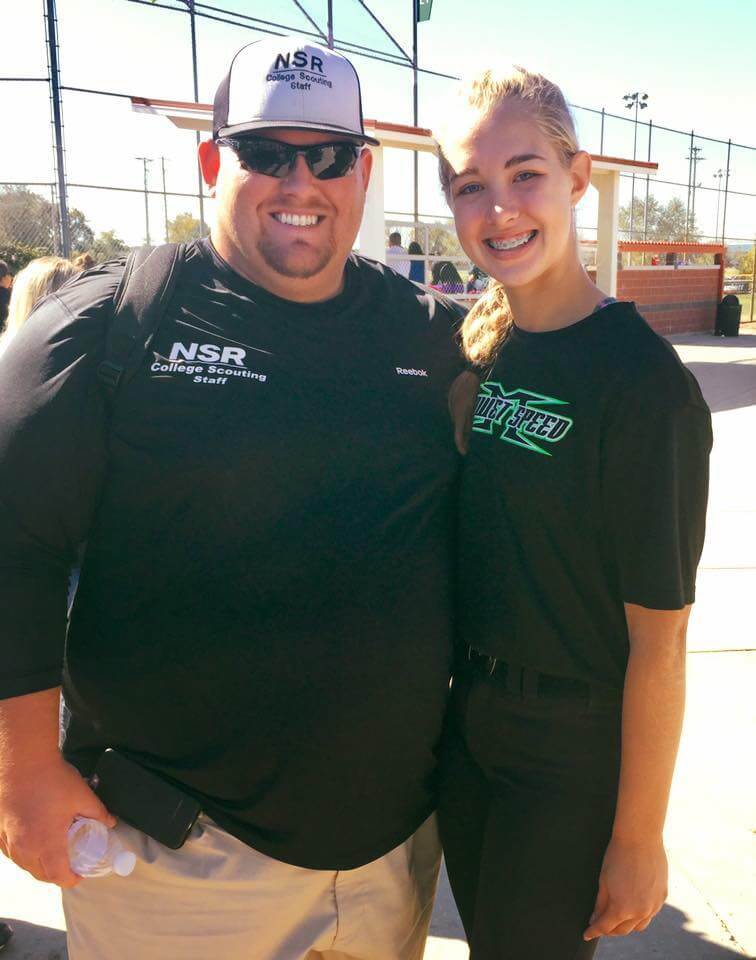
On Sunday (Dec. 31), Leslie wrote on her husband’s Facebook page:
“As most of you know, he has been in the ICU since before Christmas battling COVID. This past Sunday, he was placed on a ventilator to help him rest and receive the treatment that he needs to fight the pneumonia caused by COVID.”
“As of this morning, his lungs are still infected with no signs of change. They are weening him off the ventilator as they can. He is currently sedated so he is not able to return texts or emails. Please keep him, Parker, and I in your thoughts and prayers as the nurses have all reminded me this is a marathon not a sprint and that he may take 2 steps forward and then 1 step back.”
Yesterday, New Year’s Day, Leslie posted:
“Not much has changed today. Robby is still on the ventilator and sedated. There was not a change in the chest X-ray. But he stable and other vitals are good. The nurse did set up FaceTime audio so that Parker and I could talk to him this morning. He of course is sedated but the nurse said that there are studies shown that he can hear us. I am going to make this a daily thing so he can hear our voices and know that we are doing okay. I let him know that he had so many people praying and reaching out to us.”
And earlier this morning, Leslie added:
“Robby’s x-ray this morning showed a slight improvement in his right lung, left lung is still the same. Still not out of the woods, but we will take it! His pO2 levels were back above normal so they were able to turn the peep on his ventilator down some. Other than that, his vitals are good. Just keeping him as comfortable as they can with the sedation/pain meds.
Thank you for your continued support and prayers!”
On behalf of our Extra Inning Staff, we hope Robby will have a speedy recovery and offer best wishes, thoughts and prayers to him, Leslie and Parker.
— Brentt Eads, Extra Inning Softball
******
Inside Pitch: The Current State of College Softball Recruiting
Originally posted Nov. 12, 2020
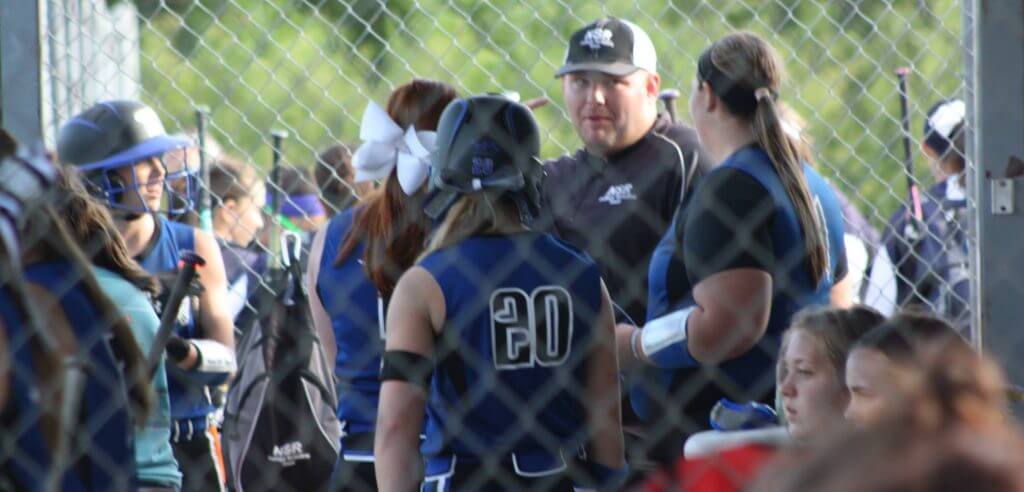
Coach Robby Wilson is the National Director of Softball Scouting for National Scouting Report (NSR) and is in constant contact with college and club coaches nationwide.
He has a unique perspective on all things fastpitch softball and shares his thoughts in this extensive report on where softball recruiting currently is as we enter the holidays and end of the year.
*****
We are just a little over a week from Thanksgiving 2020, and I think every college softball prospect, set of parents, college coach and scout that I know of are paying attention to how many days until the year 2020 is over, given the ups-and-downs and all-around confusion 2020 has brought us!
What a crazy year 2020 has been with the COVID-19 pandemic, the nationwide quarantine restrictions, the ending or shortening of seasons, and the flat-out killing of most college coaches’ abilities to scout athletes in person.
Rewind a little over three years ago when the D1 recruiting restrictions were approved with the intention of slowing down recruiting—it did to a fair extent, but what it did for the other divisions was to speed up their timelines of looking at some kids younger than they typically would.
That’s not to say that we didn’t eliminate the recruiting of the 7th grader, because for the most part, it did. The elite of the elite can still get on some coach’s boards, but nobody is offering and committing the 7th grader anymore.
THE IMPACT OF COVID-19 ON RECRUITING
With NCAA D1 restrictions in mind, fast forward to March of this year when the “tornado” that is the COVID-19 pandemic rocked America and threw the whole world into a whirlwind… including the softball world.
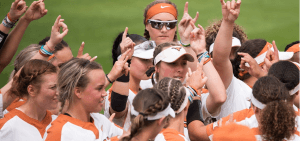
From March until June, almost every coach was confined either to his or her office or home and college softball prospects were left to only have the option of being recruited via video and a good door opener a.k.a. connected individual.
Coaches were forced to either create or further use the virtual visits that were previously used and intended for athletes on the other side of the country or even players out of the country. The result has been that kids have made decisions based on virtual visits without getting on campus or having a chance to even drive around the town that will live in at some point in the future.
Previously “closed doors” of a coach’s recruiting needs for a particular class suddenly opened back up, but, in return, some coaches with pre-existing needs for the next recruiting class saw that disappear as a result of the extra year of eligibility for current players coming into play.
The result: rosters got bigger while budgets were being cut.
We saw more 2020’s commit earlier this year than we have ever seen seniors do so before, taking themselves out of the recruiting equation for fear that, because they had reached the final semester of their senior year and had gone unrecruited, they had to take whatever they could.
I personally even received messages from 40 or 50 seniors that I was interested in helping in the recruiting process who had decided they were no longer interested in playing college ball anymore because of the complications of recruiting and all of the COVID risks that came with it.
From the summer through the majority of this fall, almost weekly, I am hearing the same from a lot of 2021’s as well: the fear they have of being actively engaged in the process and not being recruited. That is scarier to them than to have dealing with the regret of not pursuing the dream. It is another unfortunate circumstance of COVID-19.
CHANGE IN CLASS FOCUS & NEEDS
From behind the scenes, I can tell you that there has been a more increased focus on the 2023 and 2024 classes, and, yes, there are fewer coaches in need of a 2021 and some 2022’s, but that is NOT to say that there are NO coaches still needing current seniors and juniors (‘21’s and ‘22’s).
You simply just have to know where to look!
The fact of the matter is that the 21s and 22s still being recruited have a couple of elements in common:
First, they have the “ gate opener,” someone advocating for them who is in the know with what collegiate programs do have a need for their graduation year and position as well as whether or not that coach typically recruits the athlete’s style of play and if the school would be a good fit for that particular prospective student-athlete… and vice versa.
Second, the ’21’s and ’22’s still being recruited—even with the smaller number of programs having a need for them—are the kids that have their academics in order, including test scores.
Although the NCAA may have waived test scores necessity for eligibility for certain classes, that does not negate the fact that the ACT or SAT score, in addition to the recruit’s GPA and class rank, can help facilitate the financial aspect of them getting recruited more than anything else.

If, on average, every two points on the ACT equals $20,000 in savings over a four-year period of time, then it behooves every kid to put as much effort into their test scores as they are into their craft and the classroom work!
A perfect example from the last few weeks involved one of my 2022 prospects, who got the call from her No. 1 program. She was ecstatic, of course, but also confused.
The coach called to let her know how badly they wanted her and that they were absolutely offering a spot but are out of money for that class. That doesn’t change the fact that they have a huge need for her but—for the first year at least—they are not going to have any money to extend to her.
Fortunately, this student-athlete has a 4.1 GPA and a 31 ACT which, at this particular school, gets her a completely full academic ride! Thus, while there may be any athletic money involved initially, the player will not have to pay a dime.
Sometimes it’s hard for the prospects and even the parent to understand that the amount of athletic money available via scholarships does not dictate the amount of love or interest a coach has in the prospect.
In all of my years of scouting I have never once come across a coach who “lowballed” a kid and then tried to bid on them later when other schools become involved. The truth of the matter is the coach is going to offer the athletic money that he or she had allocated for that particular player (with the notable exception being, like now, when a worldwide pandemic such as the one we’re experiencing today comes along and provides a path for current collegians to receive an extra year of eligibility and money).
ADAPT… OR DIE
The current state of recruiting is unfortunate, but it is like anything in life: you “either adapt or die.” In college softball recruiting, it is a sport of continuous changes and to stay up on those changes and have the most relevant information, as well as accurate pathways to achieve what you are trying to do, is monumental.
Coaches across the board from every division have been forced to implement some level of budget cuts and a few programs have even been annihilated completely. There are coaches who have struggled to keep their assistant coaches—not just because of the budgets cut, but because of the loss of camp and other additional revenue providers
Unfortunately, NCAA Div. I coaches still cannot work camps, so some of the assistants on college softball staffs are losing a big chunk of their income. That is not to say all programs… but there are a lot.
And with the NCAA D2, D3, juco and NAIA programs, you may be talking about smaller budgets because of all of the repercussions of COVID, so now the amount allocated to travel expenses and the ability for these coaches to scout as they have previously, has been somewhat minimized.
4 KEYS TO GETTING RECRUITED
When you consider all of this, at the very least since June of this summer, it is pretty easy to see where things are headed when you are in my shoes, including the commonalities that enable me to predict how things are going to trend.

Some areas aren’t necessarily new but are ones that have increased in the level of importance.
The things I am about to list are not new and have now become so important that they are a humongous deciding factor on whether or not you are recruited… and to what extent you will be recruited.
I highly advise putting your efforts into ensuring these things over the 6-to-24 months:
-
Video
When it comes to video, I am referring to the prospect obtaining video multiple times a week which includes game footage, training at home, training at lessons, team practice and any opportunity to obtain images and get them to the coach in the case that they were not able to watch the previous ones sent.
-
Streaming
In the second reference to video, this one is going to be hard to hear. But with the large number of schools that either are restricted from scouting in person such as the Division I programs, or don’t have the budget currently to go all over the place to see all of the kids they need to, the emergence and widespread popularity of streaming has become extremely key over the last 4-to-6 monhts.
Make no mistake, you do not have to have an account with a streaming service for a coach to watch. Does it help if you have one of these for your team? It does, but if used adequately and maintained, it can be accomplished by using your team’s Facebook page just as easily.
Trust me I have seen it for myself since the beginning of the summer with the hundreds of coaches communicating with me about watching my kids because they could not attend an event. While some teams that my prospects were playing on had a streaming service, others did not and simply used their teams Facebook page. It does not matter where it is coming from as long as it works and is reliable.
-
Camps
Camps have always been an integral part of the college softball recruiting process. But if this summer made something abundantly clear, the Div. II programs were not allowed to go scout the tournament or showcase but they were allowed to go work the showcase camps.

And the plethora of the kids that I had attend those camps were not only recruited by the Div. II programs that were able to attend, but by the Div. III, NAIA, and Jucos. The camps throughout the fall—as long as they weren’t canceled because of COVID-19—have still been extremely productive for the prospects.
But if there is one thing that has been echoed by every coach of every division it is that, with the exception of the DI programs, November and December camps will be extremely crucial for college softball prospects and therefore, there will be anywhere from four or five different camps of schools that Susie is interested in having camps on the same weekend.
Unfortunately, this will not get easier after the winter (and perhaps spring) assuming that the DI dead period goes on significantly in 2021.
-
Gate Openers
Although it may seem obvious, having someone who is experienced and connected and can alleviate some of the stress and wasted efforts is a huge advantage.
Even if the coaches can’t come out to watch you, the most important thing is that every move you make should be productive and have an end result. If you go to a showcase, at the end of the weekend you should have an idea of who is looking at you and who has decided not to move forward.
If you are looking at what camps to attend, it can be confusing because there are possibly several camps on several weekends. Knowing which one you should and should not be attending can be based on the accurate level of play, the fit, and whether or not that coach has legitimate interest in you. This is where having the right person in your corner comes in the play.
STREAMING… A VITAL PIECE
It might surprise you to know how many teams still did not stream this summer or this fall.
And while those coaches may be great coaches and great individuals, they are doing their team a disservice. Make no mistake, streaming is not the end-all solution. If streaming alone would get you recruited, then the majority of prospects reading this would already be committed based all the coaches who watched their team stream this Summer and Fall.
On any given weekend I would have prospects of mine message me saying that anywhere from five to 15 different colleges were watching their stream. But if streaming was the only key to getting recruited, everybody who streamed this summer and this fall would be offered and committed by those schools.
Often times, the coaches “watching” were actually watching another girl or even the other team. The important piece here or is that streaming is absolutely going to be a vital piece moving forward in college softball recruiting, not just for the next several months, but I believe for the next several years.
It is a piece to the puzzle that, standing alone, solves nothing. However, in coordination with those other points above, it can allow you to accomplish what you were trying to accomplish during one of the hardest recruiting seasons I can remember. Each of those four puzzle pieces above are crucial and necessary in finding success in recruiting.
THE ONLY CONSTANT… IS CHANGE
If there is anything else that I can leave you with it is this: Be active but be patient!
Almost every other day I am hearing from 50 to 100 different coaches that are having their needs change for different recruiting classes. They needed a 2022 catcher and now they don’t; now they need a ‘22 shortstop. And so forth.
With the signing underway for the seniors (2021’s), as well as the end of the fall coming and exit meetings for current college players coming, transfers are going to be all over the place and therefore, more opportunities for not only the obvious transfer portal kids and junior college kids, but also legitimate ‘21‘s and possible ‘22’s.
If, hypothetically, I am a solid Div. II program and I have my No. 2 pitcher transferring out at semester in December, I know I need to do my best to find another pitcher at semester so, while the transfer portal is an option, it’s more likely that I am picking up a solid Juco kid.
Furthermore, that increases the need for me to have a legitimate 2022 arm because that Juco kid will give me a couple of years but will be done by the time my 2022 class comes in.
I could turn this table in circles with explanation after explanation and example after example. But the take-home here has to be those four puzzle pieces above, in addition to being very active while being very patient.
CHANGES ARE COMING
One thing is for sure: a lot is going to change over the next 60 or 90 days! Previously closed doors will open as they always have, but even more so this year.
The 2020 year may have been rough for everybody, in life as well as in softball recruiting. But just like everything else in life, you either adapt to the circumstances or you fizzle out and fail. The choice is up to you.
And, just like in life, the most successful people are not necessarily the most talented or most intelligent all of the time. They are the people who maximize their resources and rather than giving up, they pivot.
Lastly, everyone is up in arms trying to determine whether or not the NCAA D1 dead period will get extended. I can’t say much, but there will be a vote tomorrow (November 18) that will answer everything. Stay tuned for some of the upcoming info on my social media, or feel free to reach out. Again, it is simple: “hope for the best plan for the worst.”
If you want to learn more about where are you are at in the recruiting process or have questions about how COVID has affected your recruiting process, please do not hesitate to contact me personally anytime.
— Robby Wilson, National Scouting Report (NSR)
******
Inside Pitch: The Top 10 Things to Know About Using Video in Softball Recruiting
Written by Robby Wilson and originally published Jan. 19, 2020

In today’s college recruiting landscape for 99 percent of the sports out there, video is one of the most vital aspects to being recruited.
Softball recruiting, in particular, is heavily reliant on it!
This vblog and the accompanying written text is meant to teach you 10 key things to know when using video as submitted to Extra Inning Softball by Robby Wilson, the National Director of Softball Scouting, for National Scouting Report (NSR).
Here’s what he had to say in the half-hour video and also in the text below, which you can print out and study to make sure you’re doing it the best way possible…
*****
First, it is very important for me to clarify from the start: VIDEO ALONE WILL NOT GET YOU RECRUITED!
However, video is crucial in college softball recruiting for a myriad of reasons including:
- Limited recruiting budgets of coaches + softball being an underfunded sport,
- Coaches needing to verify a prospect is before investing the time, money and effort into going to watch a kid in person,
- Monitoring growth over time and evaluating the consistency in the level of competition that the athlete is competing against,
- Being able to watch a particular moment in time over and over, as many times as it takes a coach repeated viewings to determine: 1) Is she what I want, and 2) are the shortcomings of the athlete things that I’m comfortable with me or my staff being able to develop if she came into the program?
Historically, as long as video has around, it’s been significantly helpful in recruiting but over the last 5-10 or more years as technology and accountability has increased, what coaches look for has evolved… and will continue to do so.

When video started becoming extremely prevalent in college softball recruiting, it was mostly skills videos that players mostly shot once a year if that… and that was that. And, of course, over the years, the skills video companies started popping up left and right.
Fast forward a couple years and the cost of getting a skills video began to increase year to year. And as technology got better, video editors got better, that meant the person doing the editing was much better at “putting lipstick on a pig,” essentially being able to carve out those best pieces that, when edited and compiled, made a back-up player look like a Wendy’s All-American.
With the emergence of camera phones and streaming devices, the evolution of video naturally continues. In today’s recruiting world in softball, you’ll never get a direct answer from anyone on “What are coaches looking for in a video, skills or game and what do they want?”
The truth is, everything and anything! Getting video in today’s recruiting landscape is not as much about what you’re getting, it’s about
- how often you’re getting it (and getting it to the coach, obviously),
- the variation in the “type” of footage you’re getting,
- The consistency in delivery to the coach in addition to the ease of access.
Some coaches prefer skills video still. Some coaches only want game footage. Some coaches want a mixture. Some coaches will see your skills footage, then watch your game highlights, and then determine they have seen a lot of what they need to see; BUT, they want you to get some clips of you doing this from that angle and that from this angle, in order to make the final decision.
Therefore, while video can be such a great thing for the process, it can be utterly confusing and over-complicated by many in the process.
The simple truth is:
- video anything and everything,
- eliminate the wasted space and time,
- let the coaches decide what they do and don’t want.
College softball coaches are human and therefore are each going to have their own preferences, likes and dislikes. Therefore, it would behoove you to have footage of all kinds available in order to satisfy the “appetite” of each coach In addition, continually have updated footage of each type of video.
As you can clearly see, I could go on for days & days about video… but in today’s changing landscape of college softball & baseball recruiting, getting video is easier now more than ever.
Still, most have trouble knowing what to do with it once they have it! So these are my small, but important, recommendations when it comes to shooting video…
*****

Top 10 Things You Need to Know Videoing Footage for Softball!
1. Video Horizontally
Shoot in landscape mode, instead of vertically.
If you’re videoing on your smart phone, which I imagine 70-8 percent of you are, this simply means turning your phone sideways when videoing.
2. Don’t Get Too Close!
Look at the video on your phone (or device) as your videoing instead of watching it first person. This will allow you to ensure you’re not cutting off the head or legs of the person you’re trying to video
In contrast, if you’re using a GoPro or some other type of camera, don’t put the camera any farther away than what you have to. And when you’re done videoing, use some type of video editor to zoom in on the player without losing quality.
Most sport cameras give a widescreen view and maintain quality…but depending how far the backstop is, it’s sometimes hard to tell what in the world is going on. Don’t just video and upload it somewhere and send it to a coach. Look at the video from the coach’s eyes and ask yourself “would this video clip allow me to see what I need to without knowing who is who, in order to recruit that kid?”
3. Sound Count?
Yes! Coaches will mute. But if you don’t mute the sound or put music over it, be careful of the words being said on the video and who about including vulgarity. Music without words is best, just make sure if you do add music that it’s royalty free and not heavy.
Some coaches want no music at all, and would prefer to hear the sounds of the game, be it a game or be it at lessons the sound of the ball popping the glove or bat hitting the ball.
If you are the one videoing, be cautious of what you say! Don’t bad mouth while the camera is shooting, etc.
4. Eyes on the Prize!
Meaning keep the camera on the object (your athlete) you’re videoing THROUGHOUT the video…when Sally hits a home run don’t stop videoing after she makes contact or jump up and down while the camera is videoing your new pedicure (it happens, believe me). Keep the camera on her throughout the play. If you need to get a tripod, they’re less than $10 on amazon I’m sure.
5. Identify the person to watch when it’s not obvious
If the video shows a kid hitting a double and running the bases…we can all make a safe assumption that the video clip is about the kid hitting and not the pitcher who gave up a double.
But if it’s a baserunning clip and you’re on second base when a teammate hits it and you’re so quick you round third and make it home and show off your speed…you may want to let the person watching know “running 2b to home” or “baserunning” or similar.
If you’re the shortstop who pitches and your clip shows a pitch being hit on a frozen rope to short and the shortstop makes a good grab and throw…and you’re the shortstop at the moment…may want to let the person watching the video know you’re at shortstop.
6. Every coach is different and every position is different
Some coaches want skills footage. Some hate it. Some want game clips. Some want training clips. Some want a combination of anything and everything to give an overall picture of who YOU are and what YOU can do.
It’s best to video anything and everything and be prepared for whatever the coach is wanting.
Every position and every player is DIFFERENT. “Put your best foot forward.” If you’re not sure what YOU should be focusing on getting based on your position(s) and selling point, DM or PM me or email me (contact info below).
7. Angles Matter
Remember, every coach wants something different. So get a couple of different perspective angles.
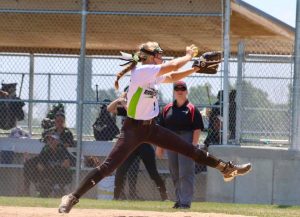
Hitting for example: behind the home plate angled to show the whole field, from the 1b dugout to show the hitter’s mechanics from the front, then the opposite angle from the 3b dugout.
Pitchers, from behind the pitcher, from beside the pitcher showing their mechanics and stride, from behind the home plate showing command of your pitches and breaks in your pitches, etc.
Yes, there will be a pitching coach that wants strictly angle from this angle or that angle… or a hitting coach that wants it from this or that. THEREFORE, get a little bit from different angles each time and be prepared.
8. Video Alone Won’t Get You Recruited
Video is a piece to the puzzle, but it’s NOT the puzzle. There’s so much more to it!
A lot of athletes make the mistake of getting a video up on YouTube and/or putting it on a profile and hoping coaches will come find it. BIG MISTAKE. Look at the views and they have 11 views in wto years and have no clue where from.
Proactive recruiting versus reactive recruiting…next vlog I’ll be addressing this directly.
9. How you send and what you send is key
College/university spam filters are strict about attachments, and in-particular video attachments because they could be some form of spam. Therefore, attaching a video increases the likeliness that you’ll end up in spam and the coach never seeing it. Instead, simply upload it to Vimeo, YouTube, etc. and send a link.
Title the video(s) appropriately. If you’re a 2022 catcher and it’s clips from catching lessons but has hitting clips at the end, and you shot it on January 12th, 2020, you should title it “Jane Doe 2020 Catcher – Catching lessons & hitting – Jan. 12, 2020” so that the coach clearly knows what they are clicking on to watch.
Any video older than 6-9 months is starting to get stale and past that, is irrelevant; say 12 months ago…you’re not the same player you were 12 months ago! Whether you’re better or worse, bigger or faster, etc. The amount of time since you shot the video is very relevant.
10. Last But Not Least: Any Camera Will Work!
You don’t need a special GoPro or some fancy camera. Anything with a camera or any camera, will get the job done! If you have a Handycam or a sports cam, great. If you don’t, use your phoneor tablet! Most mobile devices have 1080p or even 4k capabilities nowadays.
Some of my prospects/families who are the best at getting video and getting video the most consistently are simply using their phones!
I could go on for days and days about video…but the biggest thing I hope you take from this is Do Not Overcomplicate things.
Hopefully you can take these Top 10 things and decide what YOU need to do next. If you have any questions let me know in the comments or shoot me an email!
— Coach Robby Wilson, National Director of Softball Scouting, NSR



